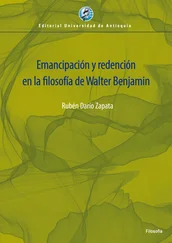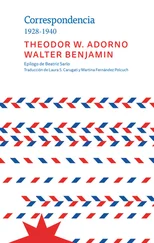Every festival is capped off with fireworks over the sea. Or I should rather say was, at least back in 1924 when I was first there. Then the government thought better of the great sums of money flying into the night sky year after year, and ordered the fireworks to be scaled back. But in the early evenings back then, from July to September there was one single trail of fire running along the coast between Naples and Salerno. Sometimes over Sorrento, sometimes over Minori and Praiano, but always over Naples, fireballs filled the sky. Every parish sought to trump the festival of its neighbors with new kinds of light shows.
I’ve told you a bit about everyday life in Naples, and a bit about the festival days, but what’s remarkable is how the two blend into each other, how every day the streets have something festive, full of music and idlers, and laundry flapping in the wind like flags; and how even Sunday has something of a workday feel to it, because every little storekeeper can keep his shop open into the night. To really get to know the city, you would probably have to transform yourself into a Neapolitan postman for a year; you would become acquainted with more cellars, attics, backstreets, and recesses than there are in many other cities combined. But even the postmen never really get to know Naples, with so many tens of thousands of people living there who don’t receive one single letter in a year, who don’t even have a place to live. There’s great misery in the city, in the whole region, which explains why most Italian emigrants hail from there. As steerage passengers aboard American steamers, tens of thousands have cast their last glance on their hometown, so beautiful in parting, lying there with its countless flights of staggered stairs, its nestled courtyards, its churches disappearing amid a sea of buildings. We leave you today with this vision of the city.
“Neapel,” GS, 7.1, 206–14. Translated by Jonathan Lutes.
Broadcast on Southwest German Radio, Frankfurt, on May 9, 1931. The broadcast was listed in the Südwestdeutsche Rundfunk-Zeitung for May 9, 1931, from 10:30–10:50 am: “Schulfunk: ‘Von einer Italienreise: Neapel’ [School radio: On an Italian Journey: Naples]. Talk by Dr. Walter Benjamin.”
1In a letter to Scholem, Benjamin refers to having visited Pompeii, as well as Naples, during his stay on Capri in 1924 (letter of September 16, 1924, The Correspondence of Walter Benjamin, 250).
2A reference to the once popular main character and emblem of the “noble robber” in Christian August Vulpius, Rinaldo Rinaldini: der Räuberhauptmann [Rinaldo Rinaldini: Robber Captain] (Leipzig: Gräff, 1799).
3Here, Benjamin borrows from his previously published essay, “Naples,” cowritten with Asja Lacis, with whom he had spent time in Capri during the visit in 1924. See “Naples,” in SW, 1, 418; “Neapel,” GS, 4.1, 312–13, first published in the Frankfurter Zeitung, August 19, 1925.
4For a similar account, see Benjamin and Lacis, “Naples,” 419; “Neapel,” 313.
CHAPTER 23. The Fall of Herculaneum and Pompeii
Have you ever heard of the Minotaur? He was the hideous monster that dwelt in a labyrinth in Thebes. Every year a virgin was sacrificed by being thrown into this labyrinth, whose hundreds of meandering, branching, and crisscrossing paths made it impossible for her to find her way out, so she was eventually eaten by the monster; that is, until Theseus was given a ball of thread by the Theban king’s daughter. 1Theseus fastened one end of the thread at the entrance, so he was sure to find his way out, and then slew the Minotaur. The Theban king’s daughter was named Ariadne. People visiting modern-day Pompeii could certainly use one of Ariadne’s threads: it’s the largest labyrinth, the largest maze on Earth. Wherever the eye wanders, it finds nothing but walls and sky. Even 1,800 years ago — before Pompeii was buried alive — it mustn’t have been easy to find one’s way; for old Pompeii, like Karlsruhe for us, was composed of a complex network of perpendicular streets. But the landmarks that helped people orient themselves in those days — shops and tavern signs, raised temples and buildings — have all disappeared. Where stairs and walls once lent order to buildings, gaps everywhere now create paths through the ruins. How often it happened that, while walking through the dead city with one of my friends from Naples or Capri, I turned to him, pointing out a faded painting on a wall or a mosaic underfoot, only to find myself suddenly alone; then anxious minutes would pass as we called out each other’s name before finding each other again. You mustn’t think that you can stroll through this defunct Pompeii as if it were a museum of antiquities. No, there in the mugginess that often fills the air, in the wide, monotonous, shadeless streets, where the ear encounters not a sound and the eye only dull colors, the visitor soon enters a strange state. The simple sound of footsteps startles him, as does the unexpected appearance of another solitary walker. And the uniformed guards with their villainous Neapolitan faces make the whole experience even less pleasant. Ancient Greek and Roman houses almost never had windows; light and air entered through an atrium, an opening in the roof with a basin beneath into which rainwater fell. The windowless walls were always rather austere, but became even more so once their color disappeared, making the streets doubly severe. But Vesuvius, with its forests at the base and its vineyards above, never looks prettier or more charming than when it appears here over the city’s stark walls or through the opening of one of Pompeii’s three or four gates that still stand today.
For centuries the volcano appeared simply beautiful, and not at all ominous to the Pompeians whose city it would one day destroy. There was an ancient tradition according to which the entrance to the underworld could be found here in Campania, the region where Pompeii and Herculaneum lie. Yet, since the beginning of written history there had been no account of an eruption by Vesuvius. For many centuries Vesuvius lay dormant; shepherds grazed their livestock in its green crater, and the slave leader Spartacus hid his entire army under its rim. There were always earthquakes in Campania, but people had grown accustomed to them. For some time they seemed to have been weak, and limited to a narrow area. This centuries-long peace that the Earth seemed to have made with men — among one another, men were as far removed from peace in those days as they are today — was disrupted for the first time by a horrific earthquake in the sixty-fourth year after the birth of Christ. Pompeii was thus in large part already destroyed. So, sixteen years later, when the city disappeared from the face of the Earth for several hundred years, it was not an ordinary city. At the time Vesuvius erupted, Pompeii was in the midst of a complete renovation and transformation, because it never happens that people rebuild a destroyed city as it was before. They always want to turn their misfortune into at least some kind of gain by rebuilding the old, only better, more secure, and more beautiful. And so it happened in Pompeii. In those days it was a medium-sized rural city of about 20,000 residents. The Samnites, a small Italian tribe, lived there completely on their own until shortly before the birth of Christ. When the Romans subjugated the region, 150 years before the city’s demise, Pompeii did not suffer all that much. It was not conquered, and was only occupied by a few Roman subjects with whom the Samnites had to share their fields. These Romans soon settled into the city and began adapting it to their own customs and habits. Since they were already in the process of modifying and rebuilding, they were well positioned to take advantage of the earthquake. In short, not much remained of the Samnites when Pompeii was destroyed, and there are scholars who would have preferred that there hadn’t been an earthquake, so that the old Samnite city would have been buried by Vesuvius and as much of it would have been preserved as remains today of Roman Pompeii. While we know quite a bit about Roman cities, we know nothing at all about those of the Samnites.
Читать дальше












